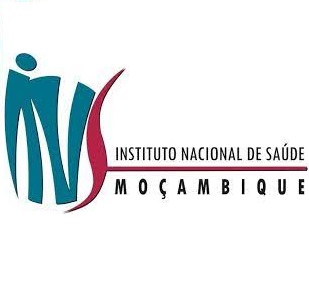Genomic Insights into Antimicrobial Resistance: Unveiling its Impact in Southern and Central Mozambique (IPSN-AMR)
Antimicrobial resistance (AMR) has emeged as a public health threat, particularly in low and middle coutries (LMICs). The global burden of AMR, estimated 4.95 million deaths associated with bacterial AMR in 2019, of which 21% (1.05 million) occurred in sub-Saharan Africa (SSA) (Murray et al. 2022). In these settings, ESKAPE-E (Enterococcus faecium, Staphylococcus aureus, Klebsiella pneumoniae [Kp], Acinetobacter baumannii, Pseudomonas aeruginosa, Enterobacter spp. and Escherichia coli) are ranked among the top pathogens associated with mortality (Sartorius et al. 2023). These pathogens are often characterized as multi- “MDR”, extensively- “XDR” and pandrug “PDR” resistant, posing a significant threat to the public health, as they are commonly related with treatment failure. As a result, the WHO categorised them as global priority pathogens to guide research (Tacconelli et al., 2018).
In many SSA countries, including Mozambique, the burden and impact of AMR infections, particularly those associated with ESKAPE-E remain to be elucidated. To understand the epidemiological trends of bacterial AMR pattern in Mozambique, the Centro de Investigação em Saúde de Manhiça (CISM) has been conducting a 24h paediatric morbidity surveillance, including systematic blood samples collection among patients admitted at the Manhiça District Hospital-MDH (southern Mozambique) and Quelimane Central Hospital-QCH (central Mozambique, since 2023). Recent data of this surveillance ranked MDR E. coli, S. aureus, Kp among the leading pathogens in bacteraemia, associated with high case fatality rates (e.g. 63% for Kp) (Sigaúque et al. 2009; Mandomando et. al, 2020; Garrine et al., 2023). This was reinforced by data from the ongoing Child Health and Mortality Prevention Surveillance (CHAMPS) Network conducted by the CISM in the same settings, which identified Kp in the chain of deaths (21%, 497/2352) of deceased children under 5 years (Verani et al. 2024), along with E. coli and S. aureus.
Comparative analysis of Kp from paediatric patients and CHAMPS post-mortem revealed a predominance of MDR isolates harbouring ESBL genes (61% vs. 25%, p=0.001) encoded mainly by blaCTX-M-15 (Massinga et al. 2021). Similarly, Garrine et al. (2023) reported the circulation of MDR S. aureus emergent clones (CC121 and CC152 by MLST) associated with mortality. Hence, to comprehensively grasp the landscape of AMR in Mozambique, it is imperative to investigate the interplay between bacterial strains and their genomic environment, particularly the AMR genes acquisition. Therefore, we intended to conduct genomic surveillance of our >25 years ESKAPE-E isolates, capitalizing the recently installed Illumina MiSeq platform at CISM. With this, we will create local capacity on genomic surveillance and new insights in the epidemiology of these global priority pathogens. Additionally, our data will inform prevention and control strategies, and potential vaccine development. In the future, these capacities will be used in the surveillance of other pathogens with epidemic potential underexplored in our country (e.g. Salmonella Typhi, Vibrio cholerae).
For this project we have defined the following specific objectives:
1. To improve the understanding of the burden and impact of AMR in the dynamics of its emergence and morbi-mortality associated through insights from genomic data in a low resource setting with limited therapeutic options.
2. To investigate the genetic diversity, resistance patterns and virulence profiles of Kp and other ESKAPE-E associated with AMR in Mozambique using whole genome analysis.
3. To strengthen local human resources capacities by conducting genomic surveillance using state-of-the-art technologies (Next Generation Sequencing and Bioinformatics) and to promote leadership and collaborations to respond to local surveillance, research and programmatic needs.
CISM recently acquired and installed an Illumina MiSeq sequencing platform to initiate genomic surveillance of malaria. However, this NGS platform has not been fully utilized for research and surveillance in clinical microbiology due to the absence of trained personnel and specific resources required to establish it as a standard method. Therefore, to achieve the objectives indicated above, we will leverage the collaboration we have with the International Centre for Reference and Research on Escherichia, Shigella and Klebsiella in the Statens Serum Institut, Denmark, which is a reference in the sequencing of Enterobacteriaceae and enteroaggregative Escherichia coli (EAEC) in particular. This collaboration will provide technical support to CISM’s team by assessing the needs at the local laboratory to help establish an implementation plan to proceed with the sequencing of bacterial pathogens locally. We plan to initiate sequencing and training using K. pneumoniae strains, followed by other ESKAPE-E pathogens. These strains have been collected and stored for over 25 years through our IBD surveillance in the Manhiça district. These activities will produce two main outputs: (1) the detailed characterization (genetic diversity, virulence and AMR pattern) at the genomic level of pathogens causing IBD over the past two decades, which have the potential to inform health policy, such as the design and development of interventions (change in the empiric therapy, vaccines, new drugs, etc.); (2) establish the capacity to conduct genomic surveillance, which is invaluable to ensure readiness to respond to any potential health emergency. Additional outputs within this project are to train postgraduate students, who will get mentorship and use the data generated to complete their academic degrees. They will be involved in the data analysis and publication, allowing the project to increase the critical mass of Mozambican researchers.
This project falls within priority #22 of the WHO’s Global Research Agenda for Antimicrobial Resistance in Human Health, under the “Cross-cutting priorities: Antimicrobial resistance epidemiology, burden and drivers” (WHO 2023) which specifies the investigation of the prevalence, incidence, mortality, morbidity and socioeconomic impact of community acquired infections and healthcare-associated infections by resistant WHO bacterial priority pathogens, across socioeconomic settings, especially in low- and middle- income countries, such as Mozambique.





